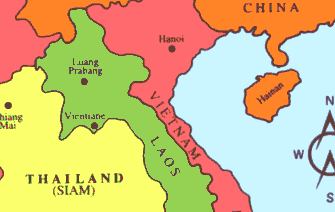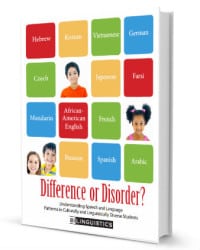
If you are a speech-language pathologist who lives in Minnesota or Wisconsin, chances are, you’ve encountered a Hmong speaker. Recently, I’ve had a lot of emails from all over the United States requesting information on Hmong speech and language development. Before we dive in, here is a little background information.
About Hmong
Where are Hmong speakers from? Hmong is spoken by people in China, Vietnam, Laos, and Thailand. There are about four million Hmong speakers worldwide and approximately 250,000 Hmong speakers in the United States. The majority of Hmong speakers in the United States are in Minnesota and Wisconsin.
The Sound Systems of Hmong and English

If you’ve read our book, Difference or Disorder: Understanding Speech and Language Development in Children from Culturally and Linguistically Diverse Backgrounds, then you already know that we need to understand the similarities and differences between the sounds of languages before we can make a decision about whether a speech error is a language influence error or whether it might indicate a speech impairment. So, take a look at the Venn diagram’s below for information about the consonants and the vowels in Hmong and English.
Assume we are testing a child from a Hmong background who is learning English as a second language.
If errors occur on the sounds that are unique to English, that is indicative of language influence.
If errors occur on the sounds unique to Hmong or the sounds shared between Hmong and English, that is indicative of a speech impairment.
It’s more complex than that, obviously, but that’s a good place to start. Then we need to think about the order of acquisition of the sounds in development, and of course the phonotactic constraints. For more information on all of that, check out the Difference or Disorder book.
Hmong Speech and Language Development


The use of phonological processes in Hmong speakers
More About Hmong
- A study by Briggs (1984) found the three most frequently occurring processes used by both groups were Cluster Reduction, Sonorant Deviation, and Prevocalic Voicing. This means that these phonological patterns are shared between both English and Hmong and can be addressed in therapy.
- We can’t forget to talk about tone. Hmong is a tonal language. There are 6 tones and they are phonemic. In other words they mean different things even when the same consonant-vowel combination is uses. The six tones are described as high, mid, low, high falling, mid rising, creaky (my personal favorite), and low falling breathy.
- Now, we have to talk a bit about language differences, too. This following table highlights a few of the linguistic differences between Hmong and English. These differences help you to know what language influence errors you might see. And remember, if the errors result from an influence from the other language, we don’t have to worry. That is a normal part of learning a second language.
| Feature | Hmong | English | Possible Errors |
|---|---|---|---|
| Pronouns | Subject and object pronouns are the same | Subject and object pronouns are different | He hit he.* |
| Plurals | Nouns are not marked for plurality | Add “s” to nouns | Four dog* |
| Adjectives | Nouns precede adjectives | Adjectives precede nouns | Dress blue* |
| Tense | Verbs are not modified for tense | Verbs are modified for tense | Sally jump* |
| Gerunds | Do not exist | Exist | bark dog*/barking dog |
Thank you for all the great feedback for all the languages you are requesting information on! We have published posts or are working on: Albanian, Amharic, Cambodian, Cantonese, Flemish / Dutch, Filipino/Tagalog, Hmong, Igbo, Karen, Kinyarwanda (ever heard of that one?), Portuguese, Romanian, Somali, Thai, Turkish, and Urdu/Hindi. For those not familiar with our current book, we’ve already compared and contrasted English with Spanish, Vietnamese (see post about it), Hebrew, Korean, German, Czech, Japanese, Farsi, Mandarin, French, Russian, Arabic, and the African-American English dialect.
If there are other languages you would like to see, please let us know with your comments below!
If you are looking for speech therapy in Austin, Texas for a child who speaks Hmong, contact our Austin speech therapy clinic.
